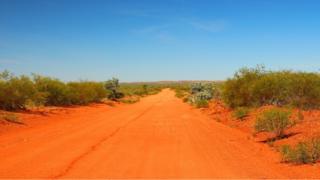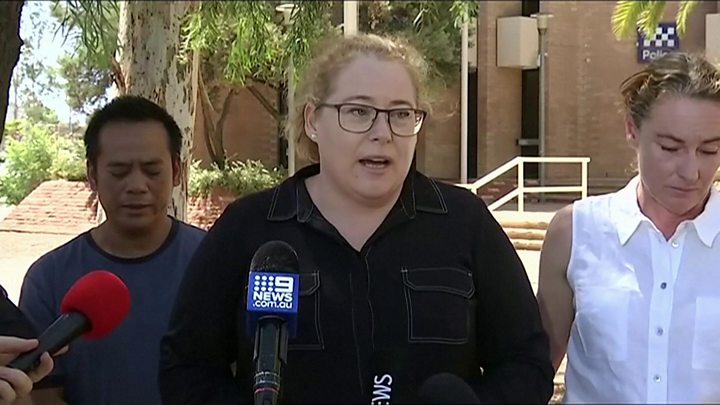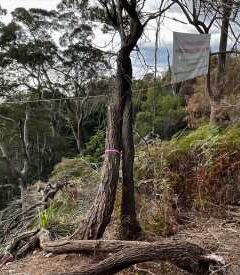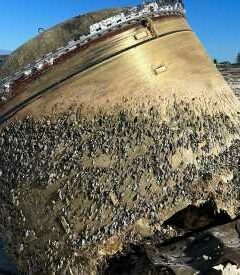Home » Australasia »
How long can you survive in Australia’s outback?
The stories of three people stranded in the Australian outback for two weeks have captured global attention.
Two of them survived, while a body was found on Thursday, presumably of the third person.
The outback is a vast remote area in the centre of Australia: dry, arid and almost entirely uninhabited.
During summer, the outback can get extremely hot and getting lost is dangerous – but experts insist that most deaths are preventable.
So what are the chances of surviving if lost and what are the factors that take or save a life?
How long can you survive without water?
“The biggest two factors are heat and dehydration,” explains Dr Matt Brearley of Australia’s Critical Care and Trauma Response Centre.
Generally, a person can survive for three days without water – but that is only under certain conditions: without physical exertion or being exposed to too much heat in the direct sun.
In the unforgiving summer of the outback, the window for surviving without water might be as short as one day, he explains.
Only with shade and with minimal physical activity would a three-day survival in the outback be possible.
The heat will likely shorten that window. Especially if – like in the most recent case – you’re trying to free a car stuck in mud or even if you decide to walk and look for help.
The group of three that got stranded in the Northern Territories had been travelling by car when their vehicle got stuck in a riverbed.
They tried to free the vehicle but after three days split up to find help.
How long without food?
“Food is actually one of the least concerns in a situation like this,” says Gordon Dedman of Bushcraft Survival Australia.
People can survive without food for about three weeks, he explains. That means that long before food becomes an issue, it’s the heat and the water that’ll become crucial.
“We sum it up with the rule of three: you can survive three minutes without air, three days without water and three weeks without food.”
Both the risks of dehydration and starvation are higher if someone in a weaker physical condition to begin with – which includes children and the elderly.
How dangerous is the heat?
Aside from the dangers of dehydration, it’s the heat itself that comes into play.
Temperatures can rise well above 40C (104F) during the summer and that means that unsheltered exposure for a prolonged period of time can be deadly.
“The normal body temperature is between 37 and 38 degrees,” explains Dr Brearley . “If it rises above 40C, it gets dangerous.”
“If you’re doing physically strenuous activity, like getting a car out of a ditch or even just walking trying to reach help, your body temperature rises.”
And when it then is very hot outside, there’s a risk the body can’t cool down properly.
“If the body temperature stays above 40 degrees, your organs begin to fail – kidney and brain functions can be impaired and that means the person can die.”
In winter, outback temperatures can drop to freezing levels at night which means that warm clothing is also essential for survival.
Wait for rescue or search for help?
“The best thing is to stay with the vehicle, that’s a very important rule,” stresses Mr Dedman.
A car can be spotted much more easily by an aircraft and search missions are usually conducted from the air.
So as long as there is some shelter at or around the car, it’s best to stay put and wait to be found – rather than venture out to search for help.
“The problem is often that these decisions are made when people are already in a heat stress environment,” Mr Brearley explains.
“And that means you’re more likely to make the wrong decision.”
It is therefore important to have a Plan B long beforehand, so that you can then stick to that when things go wrong.
If you do go out to look for help then key advice is to find a fence and stick with it.
Famers conduct regular checks on their fences and it’s much more likely someone is found that way.
One survivors from the recent group was in fact found by a farmer who was performing checks on his land, known locally as a station – about 160km (100 miles) south of the town of Alice Springs, police said.
How do you keep in touch?
“The tragedy of most of these cases is that they are very preventable,” explains Mr Dedman.
Very often it just boils down to precaution and preparation ahead of a trip to the outback.
The fundamental basics are that you let someone know exactly where you’re travelling and when you expect to be back.
Also ensure you can call for help. Normal mobile phones don’t have a signal across most of the outback.
“That’s why people should bring either a satellite phone or an EPIRB on such trips,” the outback coach stresses.
An Emergency Position Indicating Radio Beacon (EPIRB) is a device which can send a distress signal which will be picked up by local authorities who will then launch a search operation.
“With the right knowledge and preparation, getting stranded might be little more than an inconvenient camping experience,” he says.
Source: Read Full Article




